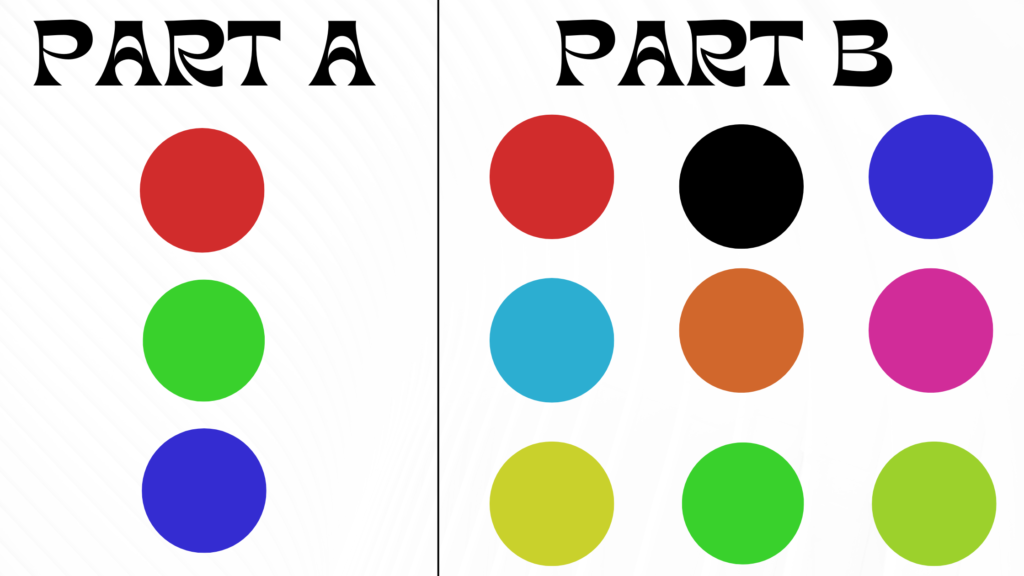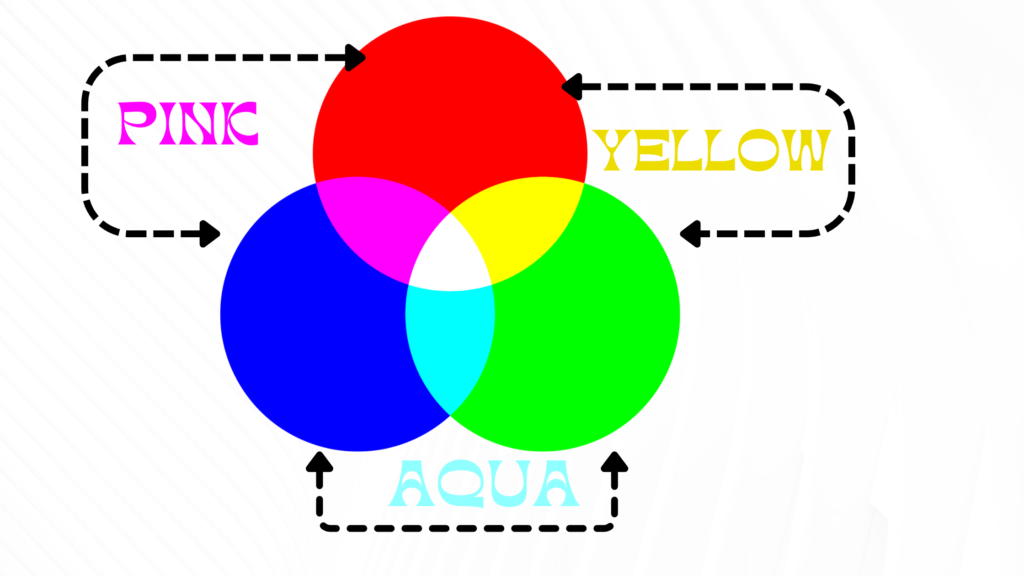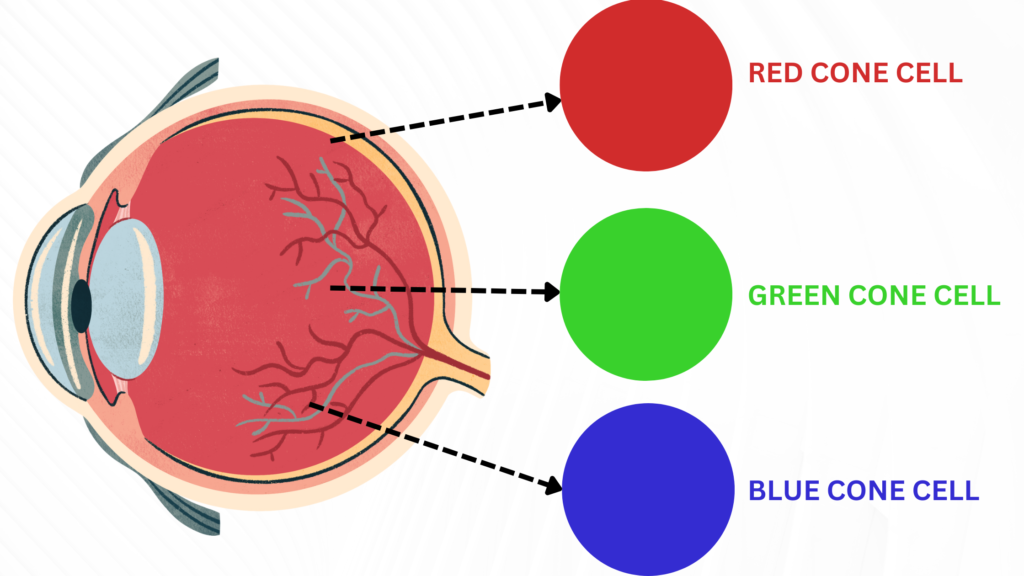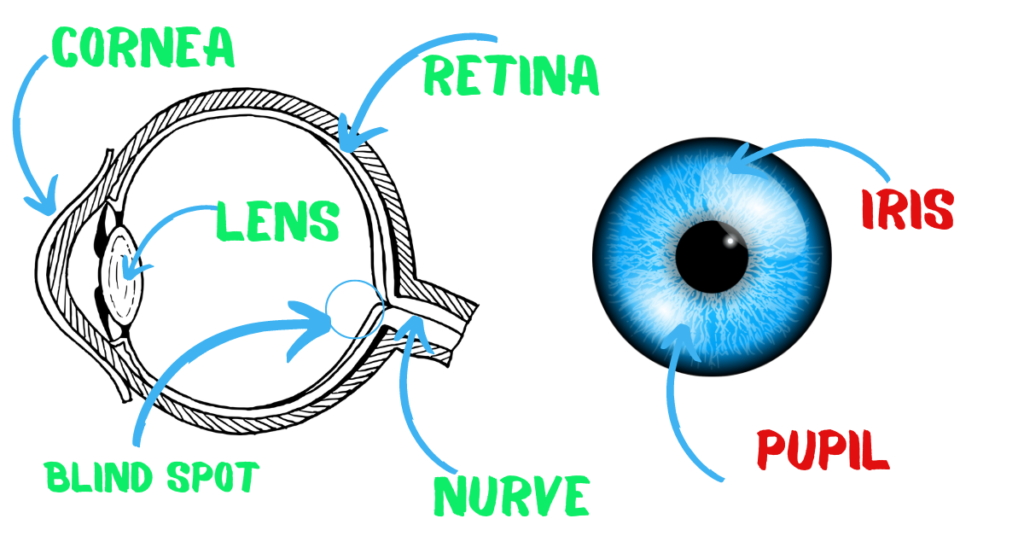Could you name some colors please, you would most likely list several colors such as green, red, blue, pink, yellow, and orange. But if I told you that there are only three primary colors—red, green, and blue—and that the rest of the colors are just illusions created by your mind, let’s consider an example.

If I asked you how many colors are in the image above in part A, your answer would be three: red, green, and blue. Yes, that is correct. Now, if I asked you how many colors are in the image above in part B, your answer might be seven. However, you would be wrong. In part B, there are still only three colors. The rest are illusions created by your mind. Let’s see how this works.

As Above Image for example, when red and blue overlap, we see a new color, pink. Yellow is seen when both red and green colors are overlapping. Normally, we assume that red and blue frequencies overlap to form pink. However, the frequencies are not actually overlapping. Let’s explore the reason. If there are only three primary colors, how do we see multiple colors?
Color is a sensation of light, which is composed of electromagnetic waves. These waves have different frequencies corresponding to different colors. The eye’s retina contains three types of cone cells: S-cones (sensitive to short wavelengths or blue light), M-cones (sensitive to medium wavelengths or green light), and L-cones (sensitive to long wavelengths or red light). These cones detect only red, green, and blue frequencies. when we see a red color, the red cone cells in the retina are activated and send a signal to our brain indicating red. Similarly, green, and blue colors activate their respective cones. Our retina has only these three types of cone cells. When red and blue light overlap, our eyes detect two frequencies simultaneously but cannot differentiate between them. The eyes can detect only one frequency at a time. When two frequencies enter our eyes, our nerves get confused and send mixed signals to our brain, which then perceives a new color—pink. The same process occurs with yellow, which results from the overlap of red and green frequencies.

Thus, when multiple frequencies enter our eyes, they send mixed signals to our brain, creating the perception of new colors. All other colors are illusions created by the mind; in reality, there are only three primary colors: red, green, and blue. Television manufacturers use this concept smartly. Inside the television, there is a component called a picture tube. The picture tube can display objects and colors using only the three primary colors—red, green, and blue. The rest of the colors are just overlaps or imagination. That’s why the color model is called RGB, indicating Red, Green, and Blue.
Color Vision Deficiency or Color Blindness
Color vision deficiency, or color blindness, involves difficulty distinguishing between certain colors due to issues with the cone cells in the retina. In medical science, color blindness is detected by the absence or malfunction of red, green, or blue cones. Color blindness may vary depending on which cone cells are defective or damaged. Some individuals might have all three cone cells defective, resulting in total color blindness.




